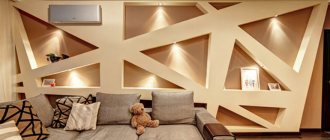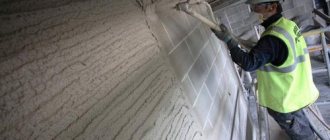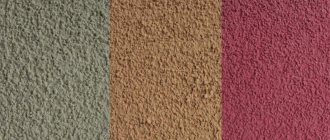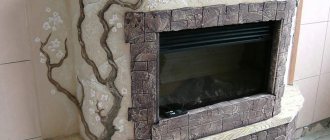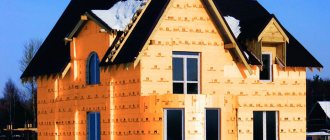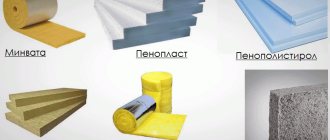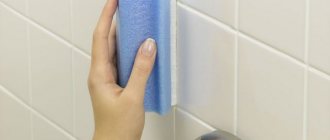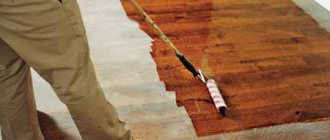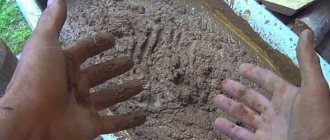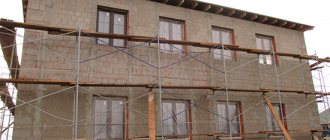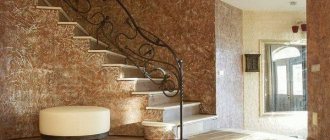Some time after the completion of the construction of the house, under the influence of external atmospheric factors or the influence of groundwater, the structure shrinks. If it is uneven, then cracks often appear on the walls. The appearance of the building becomes unpresentable. Elastic plaster, which remains intact due to its flexibility and extensibility, will help to avoid this problem.
Description of the material and history of appearance
Elastic plaster is often called rubber plaster. Of course, it does not contain traditional rubber components, but the properties really resemble this flexible, plastic material that can bend without damaging the surface. Like rubber, elastic plaster can elongate when stretched by 15% or more, and does not crack when the base moves, shifts, or vibrates.
Properties of flexible rubber plaster
Today, flexible plaster is included in the product range of most well-known manufacturers of building mixtures. In terms of façade work, the material competes with classic mineral plasters, which even with little shrinkage of the building begin to deteriorate. Due to low elasticity and elasticity, mineral mixtures cannot withstand difficult operating conditions and quickly cease to provide the necessary protection to structures.
The main component of elastic plaster is acrylic resin, a substance invented in the mid-20th century. Like other artificial resins, it is characterized by flexibility after hardening, so it is now widely used for the manufacture of a variety of building materials: plasters, paints, stone. Initially, paints were created based on acrylic, water and pigments, to which mineral filler was then added (up to 70% of the total mass). The filler can be:
- natural and synthetic fibers;
- stone chips;
- quartz sand.
The main component of elastic plaster is acrylic resin
To improve the technical characteristics of the mixture, various modifying additives and plasticizers were introduced into it. Some hardening plasters contain a certain amount of cement, which, in combination with acrylic, makes the coating incredibly resistant to mechanical stress.
The main properties of polymer plaster
The new material has a number of properties (developed by the manufacturer) that distinguish it from plaster from other manufacturers:
- The strong elasticity of acrylic material prevents cracking of walls in unfavorable weather conditions (temperature changes, high humidity) and during the process of foundation settlement.
- The excellent thermal insulation properties of the composition will help protect the living space from external cold and heat, as well as keep it warm in winter and cool in summer.
- Increased sound insulation protects the living space from external sound sources.
- The permeability of the plaster to moisture in a gaseous state (steam), makes it possible to avoid the appearance of mold fungus and the gradual destruction of the finishing layer.
- The ability to withstand large changes in temperature (from -70 to +105 ⁰C) makes it easy to use both in the far north and in the southernmost regions of Russia.
- Increased adhesion bonds with a variety of surfaces make polymer plaster compatible with materials such as concrete, cement, metal, wooden surfaces, brickwork, synthetic (expanded polystyrene, foam concrete, etc.).
Elasticity of the material Source wallsguru.com
The above properties make Stuc-O-Flex an innovative, high-quality building material used for a wide range of buildings in different climatic zones.
See also: Catalog of house projects for the finishing of which plaster was used - from construction companies presented at the exhibition of houses "Low-Rise Country".
Advantages and disadvantages of plaster
The plaster is produced ready-made and does not require mixing of components. Once applied and dried, it forms a seamless, weather-resistant finish. The advantages of the elastic mixture are:
- Available in various shades and in a white version, can be tinted in any color, painted after drying;
- easy to apply, does not require special knowledge for plastering, dries quickly;
- can serve as decorative plaster, if necessary, it is subjected to relief processing;
- environmentally friendly, does not emit harmful substances even when heated, does not emit an unpleasant odor;
- has high adhesion to most building materials (concrete, wood, brick, any porous bases), does not lag behind walls;
- can even be applied to a layer of insulation, for example, foam, as well as other types of plaster;
- universal, suitable for facade work, finishing of internal walls and partitions, cladding of new buildings and restoration of old buildings;
Acrylic plaster is durable and water resistant
- is not afraid of exposure to the sun, water, is not destroyed by ice expansion, can be used in damp rooms;
- permeable to water vapor and gases, does not change the conditions of the optimal microclimate in the room;
- withstands temperature changes within –50...+60 degrees, does not deteriorate from freezing and thawing;
- considered non-flammable, ensures fire safety of structures;
- the color does not fade or fade over time;
- prevents the appearance of mold, mosses, lichens;
- lasts for several decades without loss of performance characteristics;
- It can be easily cleaned of dust and dirt and washed with plain water.
Elastic plaster has few disadvantages. This material cannot be called cheap - its cost is quite high, and complete finishing of the building can cost a decent amount. In addition, it is not suitable for rough leveling in a thick layer, but is intended only for finishing or decorative finishing. Elastic plaster does not like seams or joints, so it is advisable to cover each surface in one go.
Areas of use
Elastic plaster can be used both outside and inside.
Due to its properties to withstand temperature and moisture, this type of coating can be used to protect the façade of a building from cracking.
Indoors, elastic plaster can be used as a painted design, stencil painting, wall covering as a decorative design.
Elastic coating performs well in places with difficult operating conditions, as well as in rooms with high humidity: bathrooms, halls, corridors, staircases.
Specifications
“Rubber” plaster may have different technical characteristics, which vary depending on the manufacturer. The average parameters of materials of this type are as follows:
- consumption - 0.5–2.7 kg/sq. m (depending on the type, evenness of the base);
- Drying time before processing is 12–24 hours;
- time to reach full strength - 14–30 days;
- water absorption rate - less than 1%;
- mass fraction of solids - from 70%;
- tinting - in any RAL colors;
- Possibility of dilution with water - up to 2%.
Flexible plaster i-Flex.
Elastic facade plaster is used outside buildings and indoors for decoration. Ideal for protecting the base from cracks and defects. After complete coverage and drying, the stretchability is about 15%.
Color range: white mixture with the possibility of tinting. It has excellent adhesion to such substrates as: concrete walls, wooden surfaces, insulating polyurethane and masonry. Temperature capabilities range from -50 to + 60 degrees.
Peculiarities:
- environmentally friendly;
- has increased adhesion to any substrate;
- used in new buildings and old houses;
- not flammable;
- wear-resistant;
- prevents mold development;
- does not fade in the sun;
- vapor permeable;
- easy to clean and wash.
Application conditions:
- base temperature from +5 to + 25 degrees;
- humidity - 65%;
- average consumption – 1.5-2 kg per sq.m
- dries completely in two to three days (depending on the thickness of the coating);
- full strength is acquired after a month.
Important: whenever using plaster, it is recommended to take the mixture from one production batch. This will protect you from tone differences. If the mixtures are different, mix them to obtain a uniform consistency.
data-matched-content-ui-type=”image_stacked” data-matched-content-rows-num=”2″ data-matched-content-columns-num=”3″ data-ad-format=”autorelaxed”>
Where is elastic plaster used?
Most often, plaster is used as a facade plaster - it is used to finish the exterior of buildings, structures, and structures. After drying, a kind of dense but breathable membrane is formed on the surface, which does not allow water to pass through, protects the walls and does not become cracked when the foundation shrinks and moves.
The plaster has a high elongation rate, so it can be used even on the most difficult areas of the facade. The material is ideal for new buildings and buildings located in seismically active areas. Elastic compounds are perfect for finishing insulated buildings as part of plastering systems.
Using elastic plaster in the bathroom
The elastic mixture is suitable for wet rooms: bathroom, toilet, swimming pool, basement, bathhouse. The plaster layer can both stretch and shrink, so it can be used when lining corridors, halls, and staircases. Plaster is used to cover gypsum stucco, products made of polyurethane, polystyrene foam, and finish walls with many seams and joints in order to obtain a seamless coating. If necessary, floor coverings are glued onto elastic plaster: parquet, carpet.
Surface primer
Despite the fact that the elastic coating has excellent adhesive properties, it is necessary to carry out a number of works to prepare the coating for its application.
Initially, you should level the wall , remove protrusions from it, if there are pockets of mold, treat them with antiseptic agents, clean the wall of dust and, if there is any, of the old coating.
Next, before applying the putty, the surface should be primed. The primer provides the best adhesion to the surface and promotes better application of the finish.
NOTE!
If the bases have a porous structure, then they should be treated with a primer twice.
Sometimes the surface requires triple application of primer.
The last step before working with elastic plaster is to inspect the surface and determine its verticality. Elastic plaster is applied in a thin layer and is not a mixture that significantly levels the walls . In case of large flaws, a reinforcing mesh should be applied to achieve a smooth surface.
Primer
Types of elastic plasters
The material is available in two versions:
- Elastic acrylic plaster. This mixture is intended for finishing and protecting premises, facades, and other internal and external structures. It is made on the basis of acrylic resin and is intended for work on concrete, brick, stone, galvanized steel, other metals, slabs, and plastic. The material is resistant to humidity and frosty temperatures.
- Elastic decorative plaster. In addition to protecting surfaces, the product has another goal: giving an aesthetically attractive appearance. The decorating effect is achieved by including filler with different shapes and grain sizes, as well as by using special techniques for processing the plaster layer.
Elastomeric decorative plaster
Most often, decorative plasters contain structural polymer fibers, and somewhat less often - natural stone chips. With the help of such mixtures, it is possible to provide various effects to the surface: imitation of gypsum, “fur coat”, “fleece”, “bark beetle” and others. Tinted decorative plasters are used using the sgraffito technique.
Surface reinforcement
When it becomes necessary to reinforce a wall, after priming it, glue a reinforcing mesh (preferably fiberglass) onto the surface using an adhesive solution or fasten it with dowels. When applying the mesh, the joints must overlap.
CAREFULLY!
The mesh must not be allowed to sag: to do this, it must be well tensioned.
If sagging occurs, it will cause gaps to form between the putty and the wall, which can lead to the mixture peeling off.
When the mesh is tightly fixed, the beacons should be set and the first layer of leveling plaster should be applied . Application should be made with sharp movements (throwing parts of the composition onto the mesh) for greater adhesion. After the first layer has dried, apply the second and wait until it dries completely.
When the wall is leveled, you should begin applying elastic plaster.
Reinforcement
Application of the composition
For high-quality application of elastic plaster, it is necessary to ensure that a number of conditions are met. Work with such compositions can be carried out at temperatures of +5...+30 degrees; their use at negative temperatures is unacceptable. If plaster is applied to the facade, it is important that the wall is closed from wind, draft, precipitation, and direct sunlight.
Applying an elastic coating to the wall
Air humidity during surface covering should not exceed 80% for external work, 65% for internal work. The material is used only when decorating vertical surfaces in which the vertical deviation does not exceed 20–25 degrees. Elastic plasters cannot be mixed with other building compounds, putty, or paint.
Required materials and tools
Typically, plaster is applied to walls using a wide metal spatula or trowel. A plastic or polyurethane grater is also useful for rubbing it. To give the surface a relief, special graters, figured rollers and even improvised means are used. To paint the dried layer you need paint, painting tools, to mix the solution - a bucket, a construction mixer. You will also need a primer, reinforcing fabric, adhesive, dowels, antiseptic, and rough plaster mixture.
Surface preparation and priming
Elastic plaster has a high degree of adhesion to different surfaces, but without careful preparation this indicator can be reduced. Thanks to preparatory measures, the reliability, durability, and durability of the finished coating are increased, and the application of plaster is facilitated. Preparation also helps to reveal defects, which are then eliminated.
First, dirt, protruding masonry mortar, other contaminants, and peeling old coating are removed from the surface. Be sure to clean off enamel and oil paints, cracked putty and plaster. Chalk and lime are washed off with water, mold-affected areas are cleaned and treated with an antiseptic. The cracks are opened and carefully covered with cement mortar. Oil stains are removed with a solvent.
During preparation, metal parts are coated with special insulating agents, and fastening elements and screws are recessed into the wall by 1–2 mm. After drying, the base is treated with a primer, which is especially important if it is highly porous. Otherwise, the base will draw water from the plaster, and the quality of the finished layer may decrease. The primer also helps bind residual dust, strengthen the base and improve adhesion.
Surface priming
The primer is applied in 2 layers with complete intermediate drying. Afterwards, if required, bases with sharp changes are plastered with mineral (polymer-cement) compounds along the beacons, the joints are sealed with elastic sealants, and they are compared with the general surface. Only then will the wall be ready for finishing with elastic plaster.
Surface reinforcement
To strengthen the rough plaster layer on weak foundations, use alkali-resistant fiberglass mesh. It is attached to the wall with adhesive or dowels, regularly checking the position and preventing sagging. The pieces of mesh are overlapped by 10–15 cm and coated well with glue. After the glue has dried, apply a leveling solution, then elastic plaster.
Reinforcing mesh for plaster
Application of facade plaster mixture
Acrylic plasters are easy to apply and can be leveled, so you can work with them using a regular spatula. Before covering the wall, mix the composition thoroughly; if necessary, add a little water, but not more than 2% of the total volume. They start working from one wall, covering it completely, from one corner to another without interruptions. If a break in the work does occur, the edge of the dried area is generously moistened with water to a width of at least 30 cm, and only then plastering is continued. If you ignore this rule, an ugly transition will be noticeable on the coating.
Immediately after application and leveling, the plaster is rubbed with a float, again from corner to corner. If it is necessary to apply patterns, carry out the necessary manipulations with a roller or stencils immediately after leveling the mixture. Next, leave the plaster to dry for 12–24 hours, and only then paint or varnish.
Advice from the experts
To ensure that applying the plaster is not difficult, you need to follow the recommendations of the masters: since the layer dries quickly, it is better to practice before doing the work. You should not take breaks in application, as the boundaries may remain very noticeable. If it is necessary to create seams, they are made with a spatula before the mixture dries. The humidity of the base should not be more than 10%
The use of elastic plaster for facade cladding or interior work allows you to solve several problems: strengthen the base, decorate it, protect the walls from moisture and dirt. You can apply the material yourself without any problems, you just need to keep in mind that it dries quickly.
Leading manufacturers
Various elastic compositions of domestic and imported brands are sold on the construction market:
- I-Flex from Bayramix. Ready-made decorative mixture with fine filler (0.7–1.2 mm). White, can be tinted, applied manually or mechanically, gains full strength in 28 days. The coating stretches by 15%.
- Ceresit CT-79. Elastic pebble composition of white color with grain up to 1.5 mm, suitable for facades, plinths, garage entrances. Enriched with carbon and polyacrylamide fibers, glass fiber, and silicone modifying additives.
- Capa-Rollputz-Flex from Caparol. It is used in a wide temperature range, suitable for external and internal work. Contains grains of the 0.4–1.5 mm fraction.
- Multiflex Nano and Nano lux from Polymer Megapolis. Waterproofing acrylic compounds for universal use. Can be used as an adhesive for reinforcing mesh, floor coverings, and waterproofing. They have a high degree of adhesion to concrete (1.6 MPa), can be applied with a brush or roller, and are suitable for treating swimming pool bowls.
Protective and finishing plaster facade Capa-Rollputz Flex
Buy a reliable product
The online store "Paints & Finishing" offers exclusively certified and tested products for construction and renovation. Do you need elastic plaster for interior work? Select the appropriate material through the catalog, check prices and place an order. We offer products from popular brands: Bayramix, Caparol, Jobi, Terraco. As an official distributor of brands, we try to create extremely reasonable prices for finishing products for ceilings, walls and other surfaces. Therefore, you have the opportunity to buy quality materials wholesale or retail on favorable terms.
Storage of the composition
The shelf life of plaster is 1–2 years, depending on the specific brand. When it freezes, it loses its properties, so it can only be stored at positive temperatures. It is advisable to place the package with plaster in a dry, dark, cool place, excluding direct sunlight. Once the package is opened, the plaster dries out quite quickly.
When finishing facades, it is important to take into account the strength, durability, high quality and beauty of the material. Elastic acrylic plaster meets all these requirements, and can also be applied by hand, which will save repair costs.
Work surface coating process
Since the building material dries quickly, when applying it it is necessary to quickly smooth out the composition (it is more convenient to do this work together). For plastering, a limited plane is selected, which must be quickly processed. You cannot be distracted from the process for more than a quarter of an hour, as unevenness may appear between surfaces processed at different times. If you need to leave for a while, the edge of the applied layer is moistened with water.
Doing work together Source sosyol.com
How to plaster insulation, selection of composition, its characteristics
When insulating using the “wet facade” system, a plaster layer is applied on top of the insulation, which protects the insulation and at the same time serves as a façade finish. Let's take a closer look at what plasters are used for insulated facades and what their features are.
The wet façade system is also called “bonded façade thermal insulation system”, or “light wet insulation”. These terms may be found on plasters packaging and determine their scope of application, so you need to pay attention to them. Basically, thin-layer plasters are used on top of the insulation.
They differ in that the base contains grains of light filler of the same size, usually from 0.5 mm to 6 mm in diameter. The size (caliber) of the grain determines the minimum thickness of the layer of this plaster. Its base can consist of various substances. Hence the wide variety of properties of plasters for facades, and in particular for the insulation layer.
Distinctive features of thin-layer plasters
Thin-layer plasters can vary significantly in their properties, however, it is possible to identify what they have in common.
- Thin-layer plasters have bright colors and excellent decorative properties, and are well suited for finishing and decorating facades. They are used not only on top of insulation, but also as a covering for rough and durable mineral plasters.
- Basically, they have increased vapor permeability; plasters can be used on top of vapor-permeable insulation layers.
- The layer thickness is often small, maximum 4 cm.
Vapor permeability is a key characteristic for plaster, which is applied on top of the insulation layer. The finishing surface layer should not have more resistance to steam movement than other layers of the wall, otherwise the wall will get wet in cold weather. The greater the vapor permeability, the better.
One of the manufacturers suggests using their plasters and other compounds when insulating a “wet facade” according to the following scheme
Cement-based façade compositions
The plaster is based on white cement. Common additives are fiber to impart bonding, plasticizers, hydrophobes for moisture resistance. A distinctive feature is low cost and the widest application.
It is sold as a dry mixture and prepared at the construction site by adding water with constant stirring in a concrete mixer or with a mixer in a bucket.
But compared to other types of thin-layer plaster, cement (mineral) plaster is more susceptible to cracking, easily absorbs dirt, is less bright, and has fewer colors. Vapor permeability is high.
Thin-layer acrylic based
Acrylic resin is the basis of this material and gives it special properties. Sold in liquid form in a bucket. It is possible to add silicone to the composition, then the plaster can be called “acrylic-silicone”, the main difference of which is greater vapor permeability.
In general, acrylic plasters are characterized by high mechanical strength, resistance to dirt and cracking, and a wide range of colors. Vapor permeability is low, which sharply limits its use.
Silicate (silicon) plaster - based on liquid glass
Silicate plaster is sold in buckets, it is mainly characterized by an alkaline reaction and some danger when working. Therefore, it is necessary to use protective equipment. You can find varieties with the addition of silicone, which can be called polysilicate or polysilicon. They have improved ductility, are better applied to the wall and form a uniform layer. But the resistance to mold, fungi, and algae is lower.
In general, this class is distinguished by the creation of a coating that is resistant to contamination and biological damage. But the composition is more difficult to apply evenly on the wall; skill is required. Vapor permeability is average.
Silicone thin layer
Polymer formulations are designed to be “no downside”. Therefore, their layer on the wall is strong, resistant to stains, very colorful with a maximum number of colors, and easy to work with. Vapor permeability is average.
What to choose for the facade
Information on various types of thin-layer plasters is given in the table
If the insulation in the “wet facade” system is polystyrene foam, then any type of plaster from the above can be used on top of it. Since the vapor permeability of the foam layer is very significant (foam is used on walls made of heavy vapor-proof materials - concrete, solid brick). More details about the wet façade insulation system
For hard mineral wool slabs that are glued to the wall, in this case, only mineral plaster can be used.
As for various silicate or silicone plasters, when choosing them you need to look at the characteristics and scope of application of each specific brand. Vapor permeability may vary.
Acrylic compounds cannot be used on mineral wool. The same conclusions are also true for lightweight aerated concrete insulation, which has recently replaced mineral wool.
Selection by permeability and strength
If the walls are single-layer and made of cellular concrete (how aerated concrete walls are built) or of porous ceramics (read more about warm ceramic walls), then the plaster for their exterior finishing should be more vapor-permeable than the blocks themselves. Mineral, silicone and silicate plasters should be suitable.
Application of gypsum plaster for interior walls
Gypsum-based plaster is used to finish vertical and horizontal surfaces inside a building and to level the facade. , polymer and mineral additives are added to the composition of gypsum wall plaster so that the layer resists the action of the atmosphere. Plaster is combined with other coatings, has an attractive appearance, is easy to paint, and can be used to create any surface texture.
- Features of gypsum mixtures Positive properties and disadvantages
- Types of plaster
- Venetian plaster
- Other common brands
- Material consumption
Working with elastic compounds
Elastic plaster can be used for exterior and interior work; it is intended for applying thin-layer finishing coatings on a leveled base and requires careful surface preparation:
- Clean the existing base from dust, dirt, mold and mildew.
- Check the adhesion of the existing plaster to the base, clean the peeling areas, prime them, and plaster them with a repair compound.
- Clean new surfaces from oil and solvent stains, prime and plaster.
Prime the prepared base again, dry it, and you can begin applying the finishing material.
For work, it is advisable to use the composition from one batch; if this is not possible, to even out the tone, mix the entire amount of the plaster composition, taking into account the possibility of completing the work within one day.
The composition is applied to the base using the classical method using a trowel and spatula, stretching the mass over the surface in the thinnest possible layer. If necessary, the surface, dried for 20–30 minutes, is treated with a special tool or improvised devices to give the desired texture.
The next stage - smoothing is carried out after half an hour, grouting with a spatula will give the coating a gloss.
The finished coating gains strength within a month. If untinted plaster was used, paint the surface with acrylic facade paint after the elastic coating has completely dried.
Working inside a flexible building is not significantly different.
